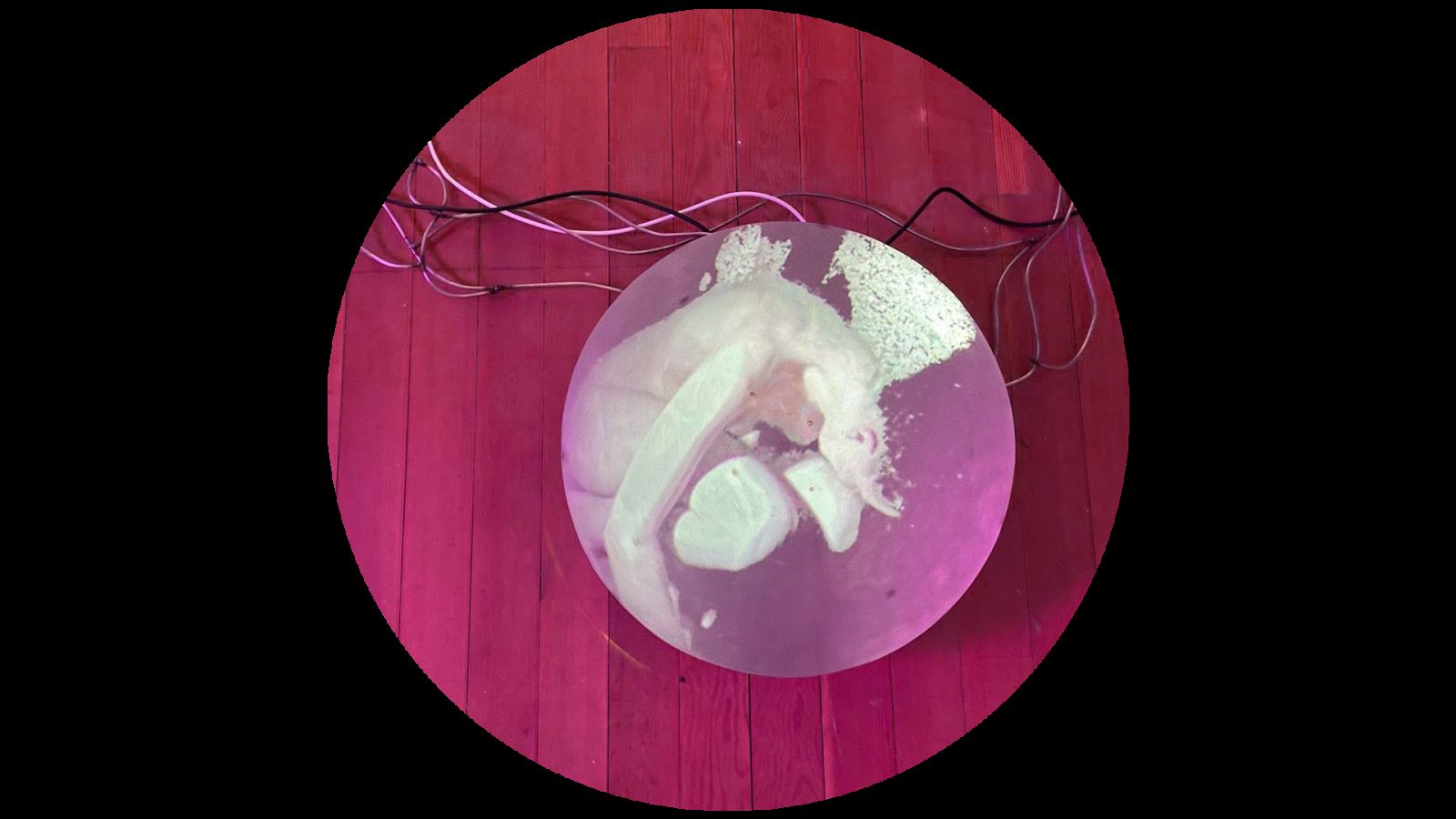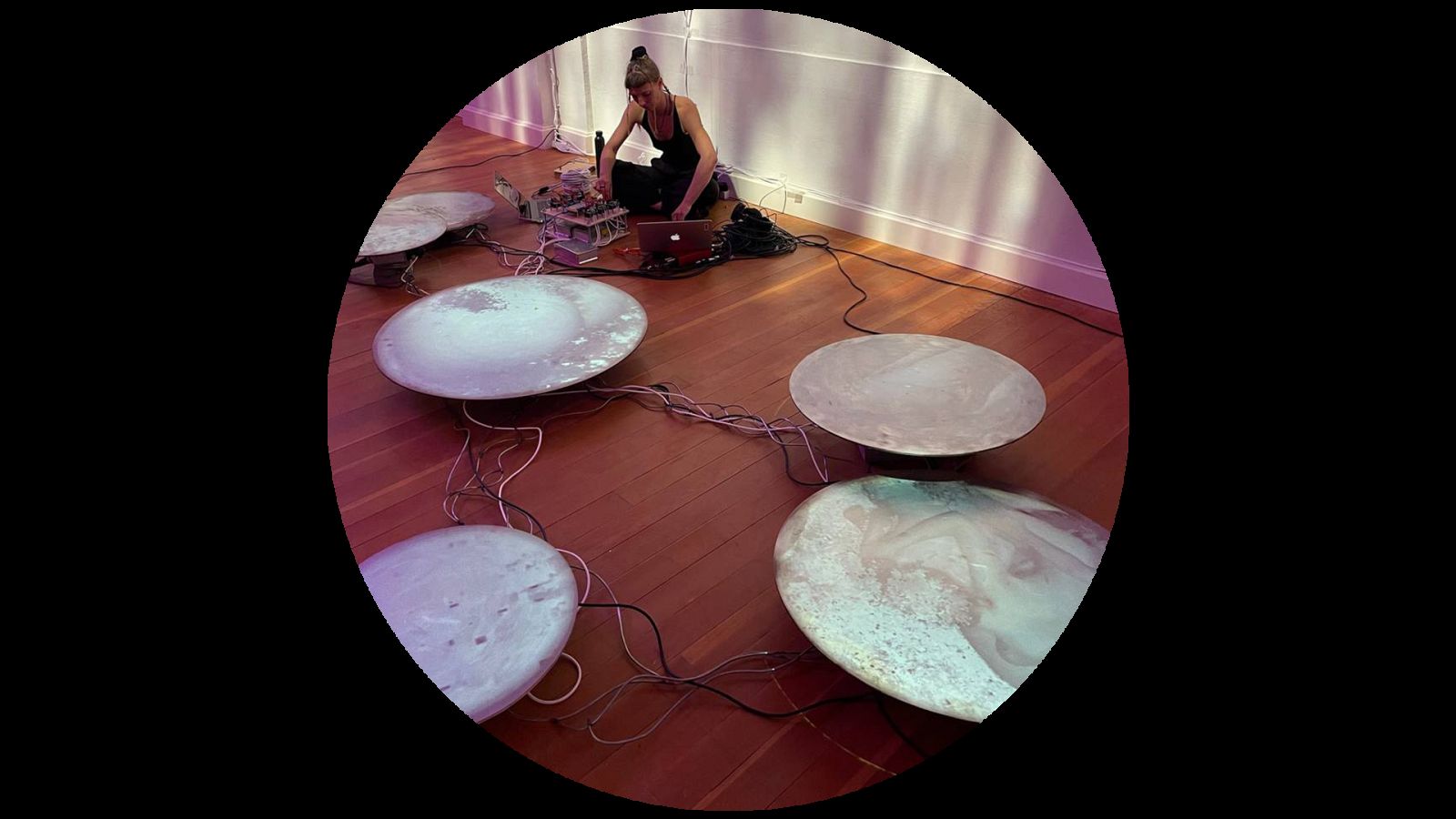
Ella Hebendanz Hebendanz
Keywords: Materialism, Feminism, Entangleism
ella-hebendanz@web.de
ellael.la/
www.instagram.com/ellahbndnz/
www.instagram.com/___ssswitchesss___/
Where does one body end and another begin? Intentionally embracing the in-betweenness, my artistic research floats somewhere within the cyberspace and the tangible world. Morphing virtual, material, and linguistic bodies, I create fluid collages of moving image and performance. Drawing inspiration from materialist feminism, I see it as an urgency to rethink the borderisation of our world and instead to celebrate the non-borders and colorful gradients of the inbetween.
Graduation Project
With my work compositions of unbroken flows I am inviting the audience to an audio-visual journey through a landscape of thoughts on materiality and fluidity. Exploring the beautifully chaotic discourse on corporeal entanglement, I am questioning the borders and boundaries of the individual body. Inspired by the craft of pottery and clay’s symbolism of matter, I use motorised turning wheels to compose a swirling dreamscape that contextualises my research. I play with the conjunction of sound, image, and movement, as well as that of human and machine, to contextualise my research on bodily entanglement. Thus, I weave my own narrative into the discourse on materialist feminism. Together, our bodies morph, move, spin, spiral, twirl, and dance.
Collaborators
Electronic Hardware: Maarten Keus
Sound Art: Hilde Wollenstein
Visual programming and projection mapping: Xiaoyao Ma
This work is part of the trilogy ặnim@, a collaborative project by our cyberfeminist collective sWitches (Ines DeRu, pamela varela, Ella Hebendanz). We use technology as our magickal tools, spells, and ingredients to create a new realm for feminism, collectiveness, and empowerment.


ENTANGLED BODIES - A COLLECTION OF THOUGHTS ON THE MATERIALITY OF LIMITS
Thesis
Journeying through the mingling mess of materialist entanglement, I am looking at bodies; bodies of any kind. This thesis resembles a gathering of observations and speculations about bodily materiality. It is questioning a body‘s beginnings and its endings while observing points of segregation and surfaces of intersection. Where are the limits, boundaries and borders of a body? And do they actually exist? I am investigating mechanisms of separation that divide, categorise, marginalise, and oppress our bodies. Simultaneously, I am wondering how, instead, we could acknowledge, allow, and create a space for bodily fusion, transition, transformation, and, finally, entanglement.